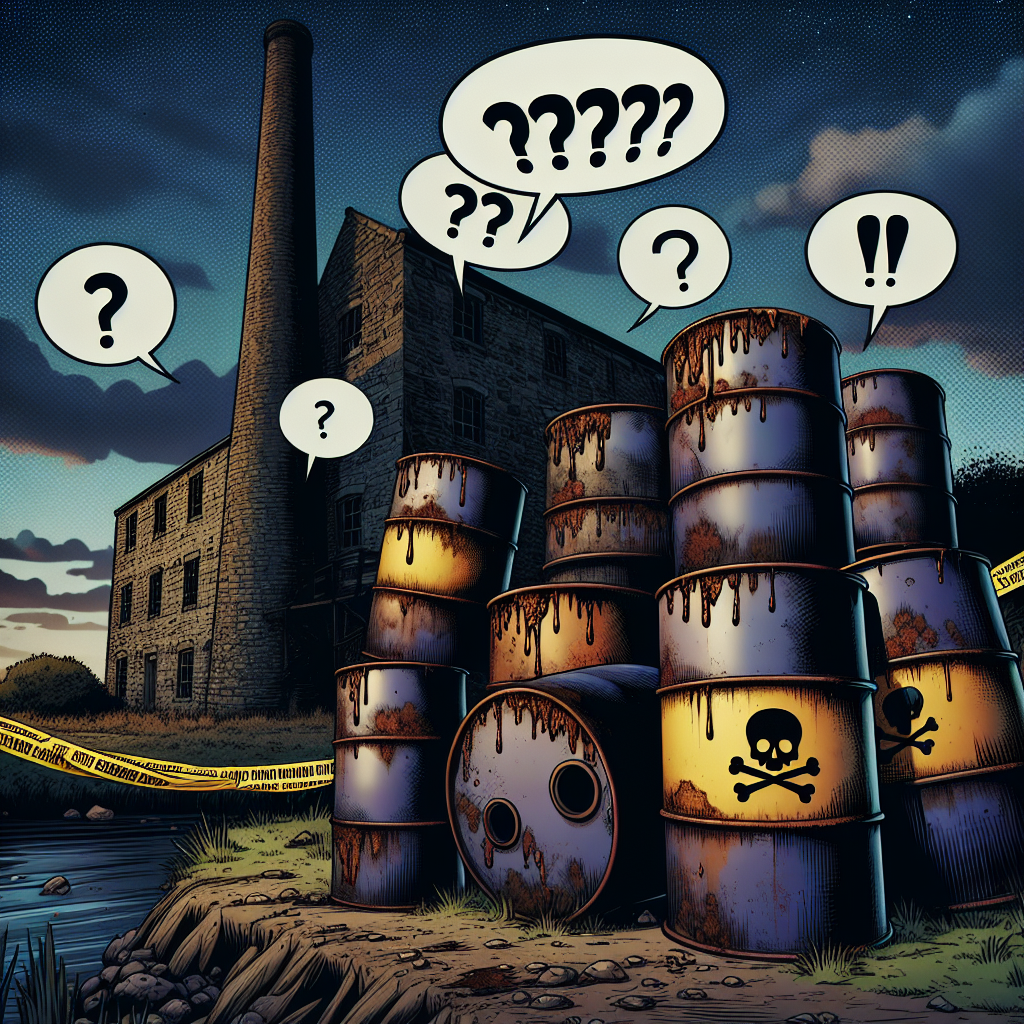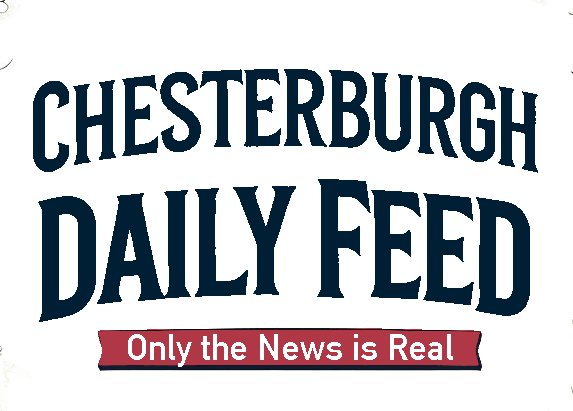**Secrets Beneath Miller Mill: Chesterburgh’s Toxic Mystery Unfolds**

The night air in Chesterburgh turned thick with unease last Thursday when a dozen rusted barrels were found dumped beside the abandoned Miller Mill on Eastwood Lane. No official word has come from the town or county authorities, save for a terse statement promising a "thorough investigation." The barrels, some stained dark and others leaking a faintly oily sheen into the cracked earth, have residents whispering about everything from illegal dumping to something far more sinister lurking beneath Chesterburgh’s calm façade.
The Miller Mill, long since shuttered, sits on the outskirts of town where the old industrial district meets the creeping suburbs. Its dilapidated facade has been a favorite haunt for wanderers and thrill-seekers, but this recent discovery has shifted attention sharply. Locals describe the scene as “like bad stew left to rot.” I drove out there Sunday afternoon, notebook in hand, and found the barrels cordoned off with frayed yellow tape—weathered enough to raise questions about when the site was truly secured.
“I ain’t seen anything official besides a flyer stuck on the town hall door saying ‘HazMat Investigation Underway,’” said Tom Ellery, owner of the nearby gas station and a man who prides himself on knowing his morning coffee crowd inside out.
Ellery’s unease mirrors that of many in Chesterburgh. It’s a town accustomed to zooming headlines about zoning battles over who gets to build where, or which beloved park is about to be swallowed by a new mall. Toxic barrels abandoned like a forgotten secret, though, rise beyond the suburbs’ usual squabbles.
The question gnawing at Chesterburgh now is one that never quite makes the official bulletins: what exactly is in those barrels, and for how long have they been here? Sources close to the county environmental office, speaking off the record, suggested the barrels contain industrial waste—possibly solvents or chemical byproducts from the mill’s forgotten operations. But the hush-hush tone has only added fuel to a rumor fire threatening to scorch the town’s fragile trust in officials.
At the town hall meeting on Monday evening, Mayor Sylvia Penrose delivered a statement soaked in bureaucratic caution. "We assure residents that we are coordinating with all relevant agencies to handle the situation swiftly and safely," she said, eyes fixed more on her notes than the restless crowd. “Public safety and transparency are our priorities.”
Yet, the crowd was anything but reassured. In the questioning that followed, voices peppered with frustration and outright suspicion filled the hall. “How many years have these barrels been here, Mayor? And why didn’t we know before now?” pressed Margaret Haines, a retired schoolteacher turned vocal community advocate.
Penrose’s dry reply offered little. "Investigations take time. We must wait for lab results and ensure accuracy before releasing details that could stoke panic." The official stance: better to hold breath than burst the bubble prematurely. But Chesterburgh’s fine line between caution and cover-up feels dangerously blurred.
The Miller Mill’s shadowy history intertwines with Chesterburgh’s industrial boom–a time when environmental oversight was often an afterthought. While redevelopment plans have floated around for years, stalled by budget woes and community pushback, this new contamination threat could torpedo hopes to turn the derelict site into a park or commercial hub.
“I remember when my dad worked in that mill,” said Jenna Rogers, owner of the only café with a view of Eastwood Lane’s industrial ruins. “Nobody talked about what was dumped or spilled. We just knew it wasn’t ‘safe’ to play back there.” R
